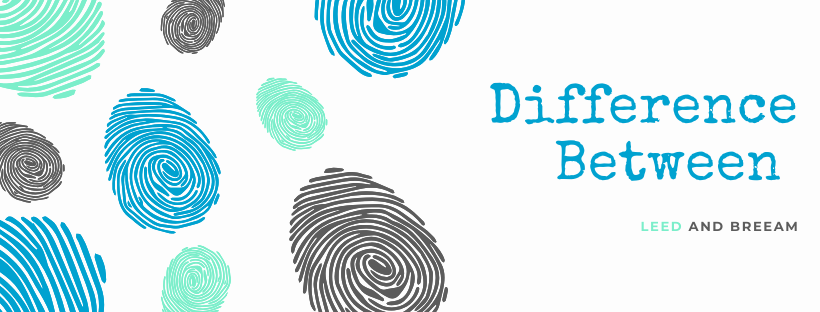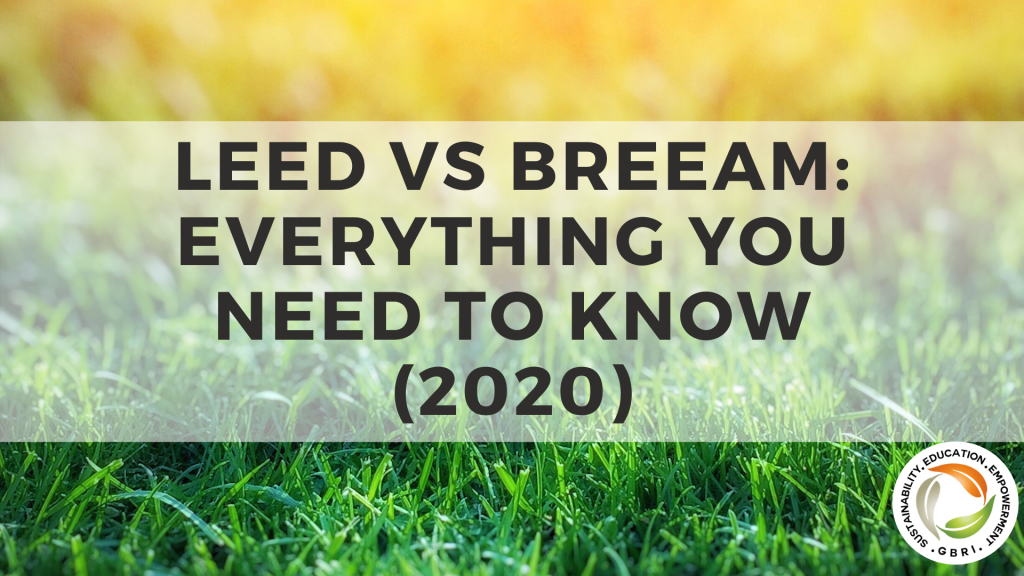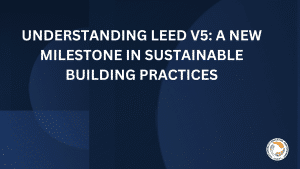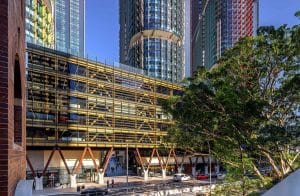In today’s world, when people across borders are suffering from the effects of climate change and are trying to limit its impact by adopting eco-friendly lifestyles, the term ‘green building’ is not unheard of. Even if you are not an architect, builder or realtor, chances are high that you have heard about the concept of sustainability and sustainable architecture, and also about various green building rating systems that evaluate buildings according to the efficiency with which they use natural resources, and their overall impact on human health and environment.
LEED and BREEAM are two such green building rating systems.
What is LEED?
LEED is one of the most popular green building certification programs worldwide designed by the U.S. Green Building Council. It stands for Leadership in Energy and Environmental Design.
We all know that buildings have a considerable impact on our environment as well as on our health and overall wellbeing. Buildings use resources, generate waste and are costly to maintain and operate. Green building is the practice of designing, constructing and operating buildings in a manner that uses fewer resources, minimizes waste and environmental impact, and decreases life cycle costs to achieve increased productivity and better occupant health.
LEED is an internationally recognized green building certification system that provides third-party verification that a particular building or complex was designed and constructed keeping in mind the following parameters:
- Maximum energy savings
- Efficient use of water
- Reduced greenhouse gas emissions
- Healthier indoor air quality
- Increased use of recycled materials
- Optimum utilization of resources and sensitivity to their impacts
- Reduced maintenance and operation costs
What is BREEAM?
BREEAM was founded almost three decades back in the United Kingdom in 1990 by the Building Research Establishment (BRE), and it stands for Building Research Establishment Environmental Assessment Method. It is one of the most popular and internationally recognized green building rating systems in the world that sets standards and measures the environmental performance of buildings – both new as well as existing.
In other words, BREEAM is the world’s leading sustainability assessment method for master-planning projects, infrastructure and buildings. It recognizes and reflects the value in higher performing assets across the built environment lifecycle, from new construction to in-use to renovation and refurbishment.
BREEAM does this through third party certification of the assessment of an asset’s environmental, social and economic sustainability performance, using standards developed by BRE. This means BREEAM-rated developments are more sustainable environments that enhance the well-being of the people who live and work in them, help protect natural resources and make for more attractive property investments.
Difference between LEED and BREEAM

The first LEED building appeared in 1998 – only 8 years after the creation of the BREEAM system. Technically, these two systems are pretty similar (almost 70-80%). They are constantly improving and taking the best world practices in the design, construction and operation of buildings. But the approach to certification of buildings is very different.
In case of LEED, the project team (usually with the help of a LEED Accredited Professional) is engaged in the design and construction of the building. The team itself can register the project, take into account the requirements of LEED standards and prepare the necessary documentation. It forms a package of project documentation and sends it to the USGBC, where the examination is conducted in different sections. If everything is in order, it results in a certificate with a certain level.
BREEAM has a different approach, and if there are similarities with the technical criteria with LEED, the processes vary considerably. In BREEAM there is the concept of an “appraiser”, and when a project is developed (usually by involving a BREEAM consultant), it is checked by an appraiser – one person, not a group of experts. The evaluator acts very formally: he is provided with documents for checking compliance with the established criteria, and if everything is in order, he approves them. Appraiser appears twice – at the design stage and at the stage of putting the object into operation. Based on the results of the compliance check, he prepares a report, which is then sent to the UK for a selective audit. The evaluation results in a certificate.
It is important to note that in the BREEAM system the certificate is issued twice (for the project itself and at its completion), the LEED certificate is issued once after the object is completed.
Another important difference between the two systems is that LEED bases its thresholds on percentages whereas BREEAM relies on quantitative standards.
Also, the nuance of the LEED system is that there are very strict mandatory requirements that are necessary for execution – otherwise the building will not be considered green. However, BREEAM as a system is more flexible. There are mandatory requirements, but they are much simpler than LEED. Under BREEAM, the higher the level of certification, the greater are the requirements. For example, at a minimum level, one of the mandatory conditions: that fluorescent lamps are high-frequency and do not flicker. This is very simple, because all modern equipment does not flicker. In general, the system is more flexible, it is possible not to make the building highly energy efficient, but it can be made more favorable in terms of air quality, or improvement or green materials. Performing alternative criteria, you can still get a certificate, though with a restriction on the level of certification.
Geographically, BREEAM is more used in the United Kingdom, while LEED makes more sense to a global corporative policy. Therefore, LEED is the most known signature because of its presence in more countries, but BREEAM wins at certified buildings in Europe.
Which is better – LEED or BREEAM?
Both the certifications need to improvise their understanding of whether a high rating brings an improvement in the construction projects’ operational performance. They both rate the building and do not consider the building’s operation in reality.
Both LEED and BREEAM are measurement tools and do not stand for poor designs. The design process should come forward and indicate which certification method works best in a specific situation.
LEED is ahead of the game whereas BREEAM is dominant in the UK because it is better adapted to the UK legislation and standards, and is cost efficient to be implemented. But still, LEED is gaining grounds and is globally recognized more as compared to BREEAM.
LEED Certification Process
LEED certification involves four main steps:
1. Register – Register your project by completing key forms and submitting payment. You’ll want to make sure that your project meets all of the LEED Minimum Program Requirements. Building projects pursuing LEED 2009 certification must:
- Comply with environmental laws
- Be a complete, permanent building
- Use a reasonable site boundary
- Comply with minimum floor area requirements
- Comply with minimum occupancy requirements
- Commit to sharing whole-building energy and water usage data
- Comply with a minimum building area to site area ratio
There are two online portals available for registration – Arc and LEED Online. Select the portal your project should use to register and pursue LEED certification accordingly.
2. Application – Once you’ve got your project registered, the next step would be to collect and submit the appropriate documentation so that GBCI may review your project. Working with your project team, you will identify LEED credits that you want to pursue and assign them to project team members. The team members will then collect information, perform calculations and analysis, and prepare documentation demonstrating your achievement of the prerequisites and your selected credits.
Once your application is prepared, upload your completed materials and make sure to perform a rigorous quality check of your entire application before submitting for review.
Don’t forget to pay your certification review fee!
3. Review – Once you have submitted the application and paid the certification fee, your LEED application is reviewed by Green Business Certification Inc (GBCI) thoroughly. GBCI will respond with its preliminary review within 20-25 business days, indicating which prerequisites and credits are awarded and which are marked as pending, with a request for more information.
You can accept the preliminary review results as final if you are satisfied, or prepare new or revised documentation or attempt additional credits before submitting for final review.
Once your final application review is complete, your project team can either accept or appeal GBCI’s final review report or request an additional supplemental (appeal) review.
4. Certify – The last but the most crucial step is, of course, being awarded the final certification report. Although the process may seem long and daunting, it is well worth having that seal of recognition for your efforts in being a greener building.
Please note that there are four different levels of LEED certification – Platinum, Gold, Silver and Certified. Regardless of the certification level achieved, all projects must meet mandated pre-requisites mentioned below:
- Regional Priority
- Design Innovation
- Education and Awareness
- Location and Transportation
- Sustainable Sites
- Energy
- Materials and Resources
- Indoor Environmental Quality
- Operations and Maintenance Costs
26 – 32 points earns basic LEED certification, 33 – 38 points earns a silver-level certification, 39 – 51 points earns gold-level certification and 52 points or higher earns platinum certification.
Also Read:
BREEAM Certification Process
BREEAM certification process involves the following steps:
- The first step would be to decide which BREEAM standard applies to your development.
- Then you need to appoint a licensed BREEAM Assessor to assess your project or building to the correct BREEAM standard.
- The next step would be to register your project for assessment through your appointed licensed BREEAM Assessor.
- Next you need to carry out a pre-assessment with the assistance of your licensed Assessor utilizing their experience and expertise.
- As your project and assessment progresses, collate the necessary project information and pass this on to your Assessor.
- Your licensed Assessor will then review the information and determine compliance with the standard.
- Next, your licensed Assessor will submit their assessment to the certification body for a certification decision.
- Lastly, receive your listed BREEAM certificate and showcase your achievement with a case study, BREEAM banner or plaque from the BREEAM web store.
Once the building has been fully assessed, the final performance rating is determined by the sum of the weighted category scores. The resulting overall score is translated into a rating on a scale of BREEAM certification levels: Unclassified (<30%), Pass (>30%), Good (>45%), Very Good (>55%), Excellent (>70%) and Outstanding (>85%).
Please note that an unclassified BREEAM rating represents performance that is non-compliant with BREEAM. This may be through a failure to meet either the BREEAM mandatory standards of performance for key sustainability issues or the overall threshold score required for formal BREEAM certification. No certificate will be issued for unclassified assessments.
With inputs from:











